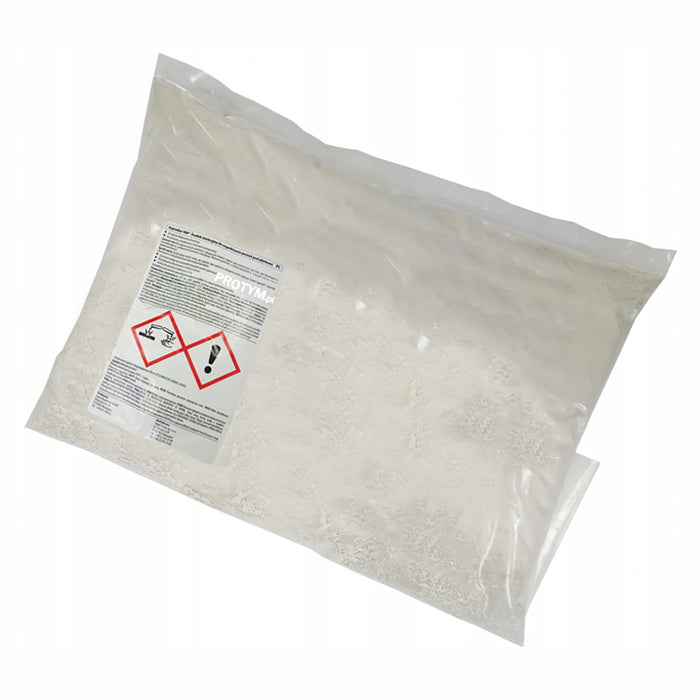
SoproDur 900 injection into the voids under the tiles - 5kg
235,77 zł netto
235,77 zł netto

One-component, hydraulically setting microcement with special additives for repairing loose cladding and filling empty spaces under ceramic tiles, natural stone cladding and vibrated floors. Strengthens porous substrates. It is used by pouring, injecting or using an injection device.
Capacity : 5kg
Usage
For repairing voids and detached floor coverings made of ceramic tiles and slabs, cotto, concrete slabs and natural stone that is not sensitive to discoloration, as well as floors made by vibrating. Also indicated for filling voids in cement screeds. Strengthens porous, low-strength, traditional thick-layer mortars.
Mixing proportions
Powder sachet 0.5 kg: 0.315 L of water
Mixing time
Approx. 5 minutes (from the moment of adding the total amount of powder)
Preparation of voids
Before starting repair work, the processing technique and insertion technique should be selected depending on the type of voids or the degree of strength weakening. In each case, the liquid mortar should reach the void being filled. The voids should be previously moistened with water to prevent the mixing water from being removed too quickly.
Mixing
Soprodur injection must be mixed using a high-speed mixer. Minimum mixer speed > 2000 rpm. Mixing proportions: 0.315L of water per 0.5kg sachet or 3.15L per 5kg of dry powder. Precisely measure the required amount of water into the container. Mix at low speed and dispense Soprodur continuously. Mix for about 5 minutes . After pouring the entire contents of the Soprodur® injection agent package, set the mixer to maximum speed.
The agent for filling gaps under the tiles can be used in several ways, depending on the possibilities in a specific case:
1. Pouring technique (for applications in the case of open joint joints) The liquid mortar is poured through the open joints (into the voids previously moistened with water) until they are completely filled. Excess material should be removed with a damp sponge. Clean the joints from the hardened suspension and fill them with grout.
2. Injection technique (2-6 mm hole diameter) Fill the hand syringe with liquid mortar. Then insert it into specially drilled holes and inject it into the voids previously moistened with water. For particularly narrow joints, it is recommended to use an attachment that can adapt to the width of the joint at the outlet. Using the injection technique, voids can be filled at pressures of up to 2 bar. Excess material should be removed with a damp sponge. Clean the gaps from the hardened suspension and fill them with grout.
3. Injection technique (6 and 8 mm hole diameter) The number of required sockets depends on the building structure and the type and size of the voids. Per 1 m2 of surface, 1-5 holes should be drilled in the existing joints to optimally fill the voids. Depending on the diameter of the holes, the appropriate sockets must be screwed in forcefully to ensure tightness of the connections.
Szczegółowe informacje i parametry produktu
Karta Informacyjna Produktu (PDS)*
*(Otwarcie w nowym oknie z oficjalnej strony producenta)
Bezpieczeństwo produktu
Karta Charakterystyki (SDS)*
*(Otwarcie w nowym oknie z oficjalnej strony producenta)